Princess X (1916) by Constantin Brancusi.
Happy new year. 02016? Read this.
The Melancholy of Departure (1916) by Giorgio de Chirico.
Merry-Go-Round (1916) by Mark Gertler.
A journal by artist and designer John Coulthart.
Princess X (1916) by Constantin Brancusi.
Happy new year. 02016? Read this.
The Melancholy of Departure (1916) by Giorgio de Chirico.
Merry-Go-Round (1916) by Mark Gertler.
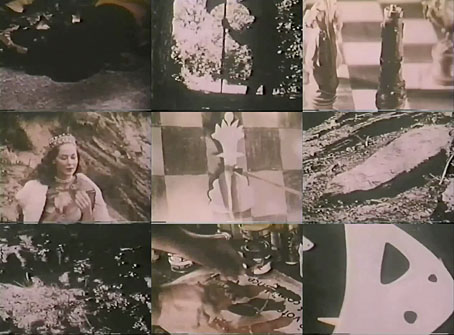
Continuing the Cocteau theme, this fascinating film remains (for the time being) unavailable in a better copy despite its artistic all-star cast. 8 x 8: A Chess Sonata in 8 Movements (1957) can be regarded as a follow-up to Hans Richter’s Surrealist anthology Dreams That Money Can Buy (1947), the directorial credit this time being shared between Richter, Jean Cocteau and Marcel Duchamp. The latter famously quit the art world to devote more time to chess-playing so his involvement with a chess-based fantasy (self-described as “a fairytale for grownups”) isn’t so surprising:
It explores the realm behind the magic mirror which served Lewis Carroll 100 years ago to stimulate our imagination.
The cast comprises famous friends including Cocteau himself, Max Ernst, Dorothea Tanning, Paul Bowles, Fernand Leger, Alexander Calder, Duchamp, and, in the Venetian episode, Peggy Guggenheim in her favourite sunglasses. In places it’s closer to Kenneth Anger’s Inauguration of the Pleasure Dome (1954) than Dreams That Money Can Buy, especially since Anger’s film was another assemblage of unique personalities. One detail I’ve not seen remarked upon elsewhere is the presence behind the camera of Louis & Bebe Barron who assisted with the sound. The Barrons are better known today for their still astonishing all-electronic score for Forbidden Planet (1956). Watch 8 x 8 at Ubuweb or YouTube.
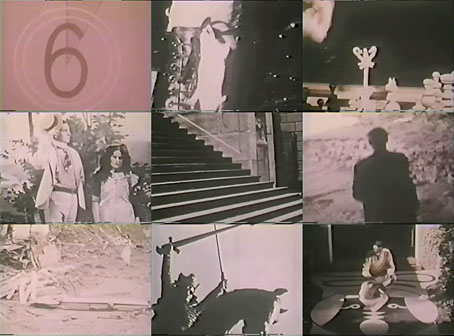
Previously on { feuilleton }
• Dreams That Money Can Buy
A film to round off a week of connected posts. Ballet Mécanique (1924) is more Dada than Surrealist if you want to get strict about the taxonomy, but the latter movement grew out of the former, and this short experiment by Fernand Léger and Dudley Murphy is a pioneering piece of work however it’s labelled. The film was photographed by Man Ray who used a variety of techniques including animation and kaleidoscope shots to present a “ballet” of machine parts and kitchen utensils. Some of the kaleidoscope images are so close to the opening shots of Fritz Lang’s Metropolis (1927) you have to wonder whether a viewing of this gave Lang ideas.
Ballet Mécanique has been provided with many scores over the years, from player pianos and sirens to more traditional arrangements. The copy at the Internet Archive has a contemporary score but like all silent films this can always be replaced with music of your own choosing.
Previously on { feuilleton }
• Dreams That Money Can Buy
• La femme 100 têtes by Eric Duvivier
• Metropolis!
• Entr’acte by René Clair
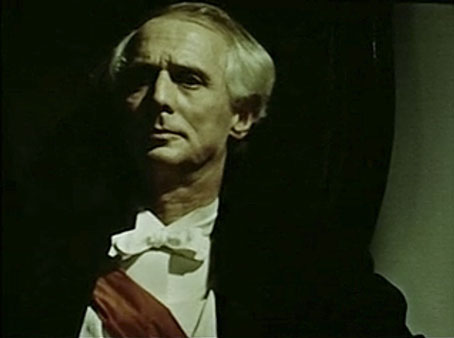
Max Ernst.
The posts this week have all followed a Surrealist theme so I feel compelled to draw attention to the DVD-quality copy of Hans Richter’s Dreams That Money Can Buy (1947) at the Internet Archive. As mentioned before, Richter’s film is one of the key works of Surrealist cinema, made at the time when the art movement had been overwhelmed by the war in Europe but was finding a brief resurgence of interest in the United States. Hitchcock had drafted Salvador Dalí to design the dream sequences in Spellbound two years earlier which may have helped Richter to raise the funds for a colour feature film. The budget was low but the production values are a lot higher than other experimental films of the time, and Richter was able to find in New York a roster of world-class collaborators including Max Ernst, Paul Bowles, Fernand Léger, Man Ray, Marcel Duchamp, John Cage and Alexander Calder.
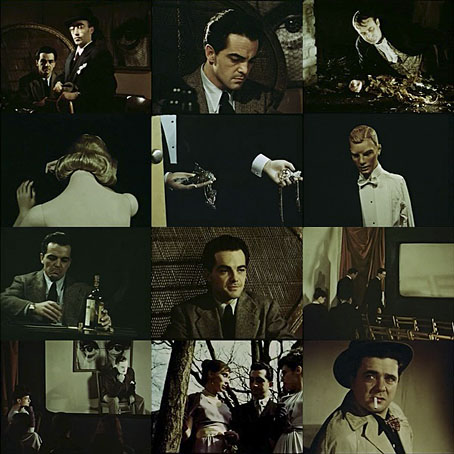
The seven artists provide (and in Ernst’s case, perform in) the dreams that lead character Joe is selling to cover his rent. Fernand Léger’s contribution is a song sequence, The Girl with the Prefabricated Heart, about love among the showroom dummies, while Marcel Duchamp’s spinning discs are given another outing accompanied by music from John Cage. Dreams That Money Can Buy is a fascinating film that’s essential viewing for anyone interested in the art of this period. It’s also a film to which Kenneth Anger owes a small debt: the sleeping woman in Ernst’s Desire sequence is seen at one point swallowing a golden ball that hovers above her mouth, a trick that Anger later borrowed for Inauguration of the Pleasure Dome.
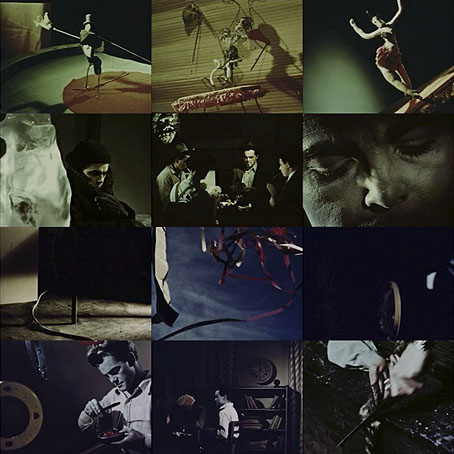
Also at the Internet Archive are three further Richter films: two short works, Rhythmus 21 (1921) and Filmstudie (1925), and also Ghosts Before Breakfast (1927), an inventive experimental piece using cut-up imagery, simple animation and trick photography.
Previously on { feuilleton }
• La femme 100 têtes by Eric Duvivier
• Entr’acte by René Clair